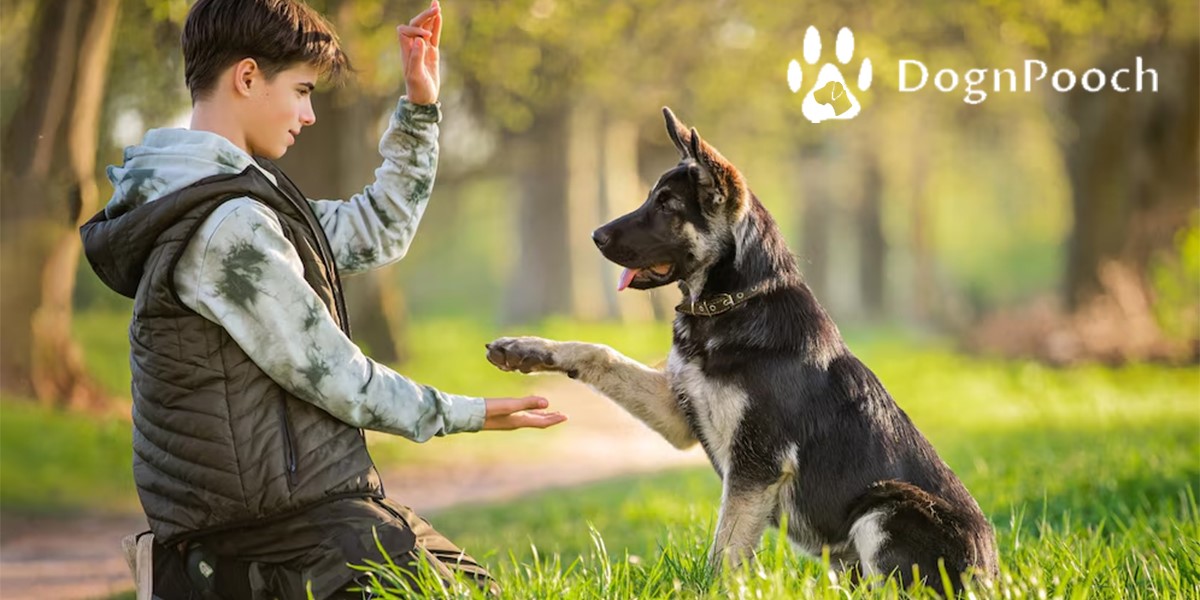Picture this: You’re at the dog park. Chaos everywhere. Kids yelling, dogs barking, whistles blowing—and your dog’s just bolting toward a squirrel. You shout, but it’s useless. In that moment, wouldn’t it be amazing if a simple flick of your wrist or wave of your hand could get their attention?
Here’s the truth: dogs don’t speak our language—but they read our body language like pros. That’s why hand commands are not just a backup to voice cues—they’re often better. And no, we’re not just talking about “sit” or “stay.” Today, we are diving into a next-level approach to visual communication with your pooch, exploring lesser-known hand signals, transition strategies, and even custom gestures to build your own doggy sign language.
Why Hand Commands Work So Well?
Dogs evolved to understand visual cues long before we ever tried teaching them human words. Their ability to read our posture, gestures, and even facial expressions means hand signals feel natural to them.
- Dogs often respond faster to visual cues than voice alone
- Gestures cut through noisy or distracting environments
- Visual commands are essential for deaf or older dogs
Training with your hands is like showing your dog what you want instead of telling them—and that clarity builds confidence, focus, and trust.
Beyond Basics: Unique Hand Signals
Let’s get creative. You already know about “sit” and “stay.” But did you know you can teach your dog these advanced hand-based cues?
- Go to Bed: Flattened palm pointed to a mat or bed
- Quiet: Finger to lips gesture (yes, dogs can learn this!)
- Spin: Finger in a small circular motion
- Touch: Open palm held out for nose touch (useful for redirection)
- Back Up: Both hands pushing forward, like directing traffic in reverse
- Look at Me: Pointing to your nose for eye contact cue
These aren’t just cool party tricks—they’re functional, especially in distracting environments or around other dogs.
Building Your Own Visual Cues
Here’s where it gets fun: You can make your own hand commands as long as you stay consistent.
Here’s how:
- Choose a gesture that feels natural to you.
- Pair it with the verbal cue at first (e.g., “wait” while holding up your hand).
- Reinforce with treats or affection when your dog responds correctly.
- Fade out the verbal cue over time—your dog will get the message.
Dogs don’t care what your hand looks like—they just associate it with an outcome. You could use a peace sign, a thumbs-up, or a full-on TikTok dance move (okay maybe not that)—as long as you’re consistent.
When to Use Hand Commands Over Verbal?
There are times when hand gestures just outperform voice cues. Here’s when you’ll want to rely more on silent signals:
| Situation | Why Hand Commands Work Better |
| Crowded dog parks | Voice gets drowned out, visual grabs attention |
| Distance training | Easier to signal a dog from far away |
| Dogs with hearing loss | No frustration over misheard commands |
| Nighttime or quiet time | No need to raise your voice |
| Trick training or agility routines | Adds clarity and precision |
Combining Movement with Meaning
Hand commands aren’t just stationary gestures. You can use movement to direct your dog, like a traffic cop guiding cars.
Try this:
- Sweep your hand to the left or right to guide your dog to turn
- Point to a target (like a crate, mat, or place on the couch)
- Use two hands in motion to signal your dog to move around or through obstacles
Dogs are visual learners. The more you use directional motion, the more precise and exciting training becomes.
Getting Started the Smart Way
Before your dog can master advanced gestures, they need to have a strong foundation. That means understanding basic obedience first—no skipping steps! Our guide to dog training basic commands walks you through the essentials every pup needs to know before hand signals become truly effective.
Your Hands Are the Ultimate Training Tool
You don’t need fancy gear or a loud voice to get your dog to listen—you just need your hands. With a little practice and creativity, you can create a custom communication system your dog understands, no matter where you are or how noisy the world gets.
So, ready to speak your dog’s language—without saying a word?
Start with the fundamentals and let Dog N Pooch help you unlock a whole new level of connection with your pup.
Read Also: The Benefits of Board and Train Dog Training with Hand Commands
Watch Dog Training Commands Videos








